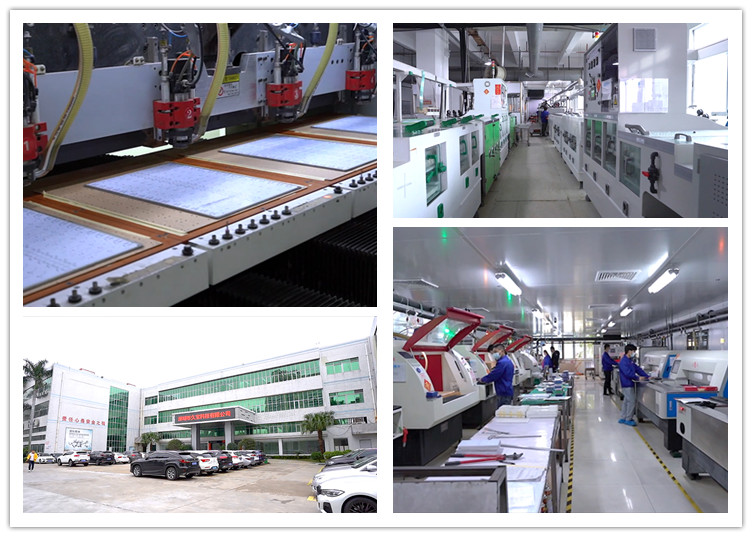 English
English-
 English
English -
 Español
Español -
 Português
Português -
 русский
русский -
 Français
Français -
 日本語
日本語 -
 Deutsch
Deutsch -
 tiếng Việt
tiếng Việt -
 Italiano
Italiano -
 Nederlands
Nederlands -
 ภาษาไทย
ภาษาไทย -
 Polski
Polski -
 한국어
한국어 -
 Svenska
Svenska -
 magyar
magyar -
 Malay
Malay -
 বাংলা ভাষার
বাংলা ভাষার -
 Dansk
Dansk -
 Suomi
Suomi -
 हिन्दी
हिन्दी -
 Pilipino
Pilipino -
 Türkçe
Türkçe -
 Gaeilge
Gaeilge -
 العربية
العربية -
 Indonesia
Indonesia -
 Norsk
Norsk -
 تمل
تمل -
 český
český -
 ελληνικά
ελληνικά -
 український
український -
 Javanese
Javanese -
 فارسی
فارسی -
 தமிழ்
தமிழ் -
 తెలుగు
తెలుగు -
 नेपाली
नेपाली -
 Burmese
Burmese -
 български
български -
 ລາວ
ລາວ -
 Latine
Latine -
 Қазақша
Қазақша -
 Euskal
Euskal -
 Azərbaycan
Azərbaycan -
 Slovenský jazyk
Slovenský jazyk -
 Македонски
Македонски -
 Lietuvos
Lietuvos -
 Eesti Keel
Eesti Keel -
 Română
Română -
 Slovenski
Slovenski
PCB Impedance Control
2024-04-11
As PCB signal switching speeds continue to increase, today's PCB designers need to understand and control the impedance of PCB traces. With the shorter signaling times and higher clock rates of modern digital circuits, PCB traces are no longer simple connections, but rather transmission lines.
In practice, it is necessary to control the trace impedance at digital marginal speeds higher than 1ns or analog frequencies above 300Mhz. One of the key parameters of PCB traces is their characteristic impedance (i.e., the ratio of the voltage to the current of a wave as it travels along the signal transmission line). The characteristic impedance of the printed circuit board conductor is an important indicator of circuit board design, especially in the PCB design of high-frequency circuits, it must be considered that the characteristic impedance of the conductor and the device or signal required by the characteristic impedance of the same, whether or not to match. This involves two concepts: impedance control and impedance matching, this article focuses on impedance control and stacking design issues.
Impedance control, the conductor in the circuit board will have a variety of signal transmission, in order to improve its transmission rate and must improve its frequency, the line itself, if due to etching, thickness of the laminated layer, the width of the conductor and other different factors, will result in impedance worthy of change, so that its signal distortion. Therefore, the conductor in the high-speed circuit board, its impedance value should be controlled within a certain range, called "impedance control".
The impedance of a PCB trace will be determined by its inductive and capacitive inductance, resistance and conductivity. Factors affecting the impedance of PCB traces are: width of copper wire, thickness of copper wire, dielectric constant of the dielectric, thickness of the dielectric, thickness of the pads, path of the ground wire, traces around the trace, etc. PCB impedance ranges from 25 to 120 ohms.

In practice, it is necessary to control the trace impedance at digital marginal speeds higher than 1ns or analog frequencies above 300Mhz. One of the key parameters of PCB traces is their characteristic impedance (i.e., the ratio of the voltage to the current of a wave as it travels along the signal transmission line). The characteristic impedance of the printed circuit board conductor is an important indicator of circuit board design, especially in the PCB design of high-frequency circuits, it must be considered that the characteristic impedance of the conductor and the device or signal required by the characteristic impedance of the same, whether or not to match. This involves two concepts: impedance control and impedance matching, this article focuses on impedance control and stacking design issues.
Impedance control, the conductor in the circuit board will have a variety of signal transmission, in order to improve its transmission rate and must improve its frequency, the line itself, if due to etching, thickness of the laminated layer, the width of the conductor and other different factors, will result in impedance worthy of change, so that its signal distortion. Therefore, the conductor in the high-speed circuit board, its impedance value should be controlled within a certain range, called "impedance control".
The impedance of a PCB trace will be determined by its inductive and capacitive inductance, resistance and conductivity. Factors affecting the impedance of PCB traces are: width of copper wire, thickness of copper wire, dielectric constant of the dielectric, thickness of the dielectric, thickness of the pads, path of the ground wire, traces around the trace, etc. PCB impedance ranges from 25 to 120 ohms. In practice, a PCB transmission line usually consists of a wire trace, one or more reference layers and insulating material. The trace and the layers form the control impedance. PCBs will often be multilayered and the control impedance can be constructed in a variety of ways. However, whatever method is used, the value of the impedance will be determined by its physical structure and the electronic properties of the insulating material:
The width and thickness of the signal trace;
The height of the core or pre-filled material on either side of the trace;
The configuration of the traces and the board layers;
The insulating constants of the core and pre-filled material.
There are two main forms of PCB transmission lines: Microstrip and Stripline.
Microstrip:
Microstrip is a ribbon wire, meaning a transmission line with a reference plane on one side only, with the top and sides exposed to air (or coated), above the surface of the insulating constant Er board, referenced to the power or ground plane.
Note: In actual PCB manufacturing, the board manufacturer usually coats the surface of the PCB with a layer of green oil, so in actual impedance calculations, the model shown below is usually used for surface microstrip lines:
Stripline:
A stripline is a strip of wire placed between two reference planes, as shown in the figure below, and the dielectric constants of the dielectrics represented by H1 and H2 can be different.
The above two examples are just a typical demonstration of microstrip lines and striplines, there are many different kinds of specific microstrip lines and striplines, such as laminated microstrip lines, etc., all of which are related to the stacking structure of the specific PCB.
The equations used to calculate the characteristic impedance require complex mathematical calculations, often using field solving methods, including boundary element analysis, so using the specialized impedance calculation software SI9000, all we need to do is control the parameters of the characteristic impedance:
Dielectric constant of the insulation layer Er, width of the alignment W1, W2 (trapezoidal), thickness of the alignment T and thickness of the insulation layer H.



